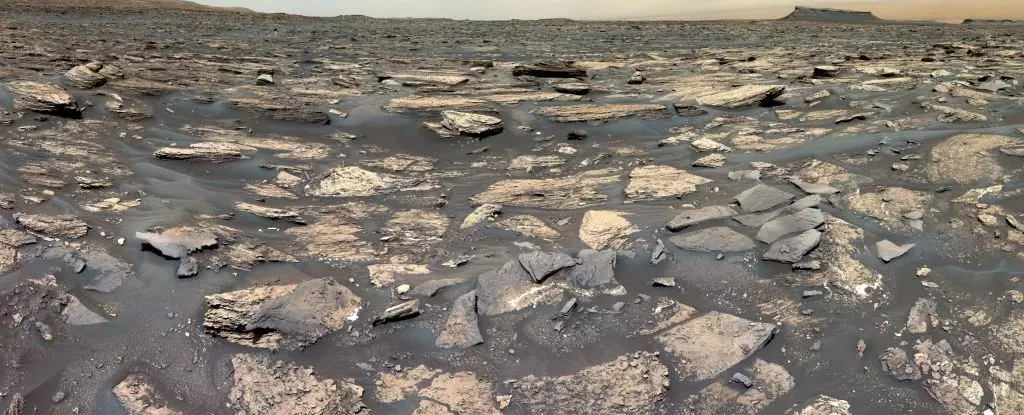Recent observations made by the Curiosity rover on Mars have provided valuable insights into the potential habitability of the red planet billions of years ago. Analysis of rocks in the Gale Crater has uncovered a significant amount of manganese oxide, a mineral commonly found in Earth’s lakes under highly oxidizing conditions. This discovery raises questions about the past environment on Mars and the possibility of habitable conditions in its ancient history.
Manganese oxide plays a crucial role in biological processes on Earth and is essential for various life forms. Its presence in the rocks of the Gale Crater suggests the existence of processes similar to those found on our planet. The formation and concentration of manganese oxide in such quantities indicate the potential for oxidation reactions in Martian atmosphere or surface water, hinting at a habitable environment in the distant past.
Researchers, such as geochemist Patrick Gasda, have carefully studied the manganese oxide using Curiosity’s ChemCam. They have explored different mechanisms for the precipitation of manganese in the Gale Crater lake, including precipitation from lakewater or groundwater through porous sands. The presence of highly oxidizing conditions is essential for these processes, indicating the likelihood of an oxygen-rich atmosphere in the ancient Martian environment.
The discovery of manganese oxide in Martian rocks opens up the possibility of finding traces of ancient life on the red planet. Microbe-mediated oxidation could have left biosignatures and organics in the manganese-bearing rocks, offering a tantalizing prospect for future exploration. The Perseverance rover, currently investigating a dried-up delta environment, could search for these biosignatures during its mission, shedding light on the habitability of Mars in the past.
The findings from the study of Martian rocks in the Gale Crater provide valuable insights into the planet’s history and potential for habitability. The similarity between the ancient Martian environment and Earth’s habitats raises questions about the origins of oxygen and the presence of life on Mars. Further research is needed to unravel the mysteries of Mars and uncover any evidence of past habitable conditions that could support the existence of ancient life forms.
The discovery of manganese oxide in Martian rocks represents a significant step towards understanding the potential habitability of the red planet. The study of ancient environments on Mars offers valuable insights into the planet’s history and the conditions that may have supported life in the distant past. Continued exploration and research on Mars will help unravel the mysteries of the planet and shed light on the possibility of ancient life beyond Earth.



Leave a Reply